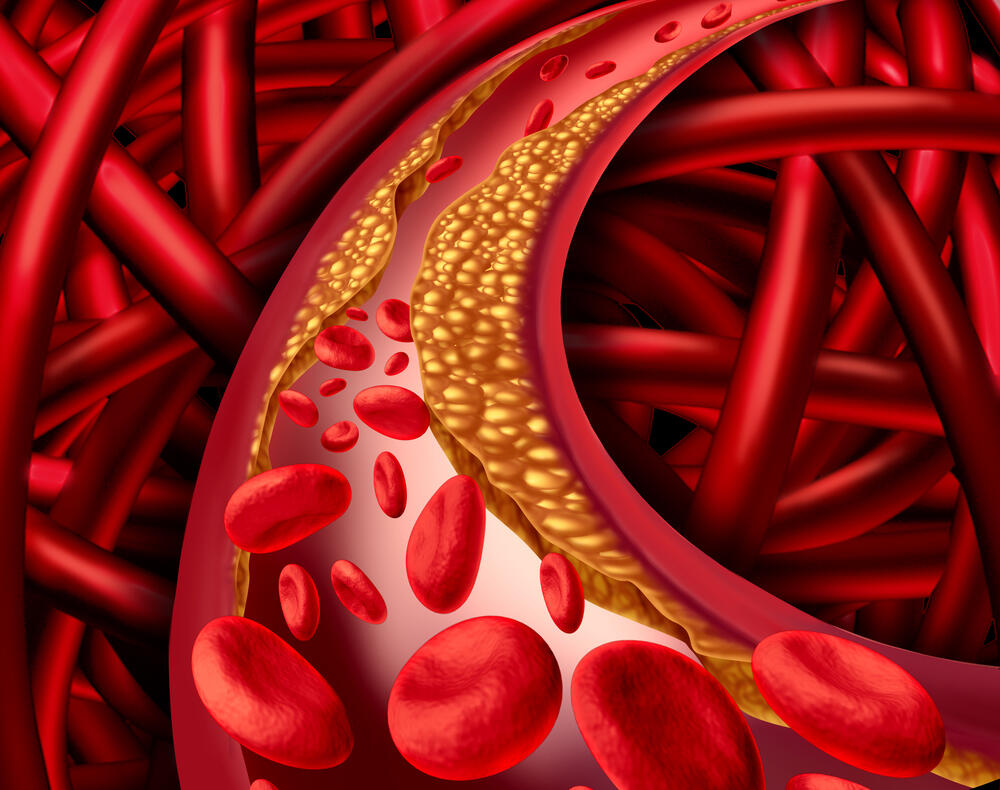Getting your Trinity Audio player ready...
Cholesterol is a crucial fatty substance present in every cell of our bodies. It plays a vital role in building new cells and producing essential hormones like vitamin D and testosterone. Most cholesterol is produced in the liver and travels through the bloodstream via particles called lipoproteins.
While our bodies need cholesterol, high levels in the blood can cause significant harm to blood vessels and the heart. This condition, known as hypercholesterolemia, is a major risk factor for atherosclerosis, which can lead to heart attacks or strokes.
One of the tricky aspects of high cholesterol is its "silent" nature – people often don't experience clear symptoms until significant damage has occurred to the blood vessels. The primary dangers of high cholesterol levels include atherosclerotic vascular diseases, mainly caused by cholesterol deposits in the artery walls. This process can begin at a young age, and in severe cases, the atherosclerotic plaque can rupture, forming a blood clot that can block blood flow and lead to a heart attack or stroke.
Most of our cholesterol (about 80%) is produced by the body, with only about 20% coming from food. There are two main types of cholesterol: LDL, known as "bad cholesterol," and HDL, known as "good cholesterol." HDL helps absorb the remaining bad cholesterol and transports it to the liver.
Bad cholesterol (LDL) tends to deposit in the blood vessel walls, creating plaque that can block blood vessels, leading to heart attacks and strokes. Therefore, it's crucial to maintain low levels of LDL in the blood.
Recently, a very dangerous type of cholesterol called LP(a) has also been studied. This particle is similar to regular LDL but is more "sticky," contributing to heart diseases at a young age. About 20% of the population has elevated levels of LP(a). Without a dedicated test, you wouldn't know its level in your blood. Many patients have normal cholesterol values but elevated LP(a), putting them at risk for cardiovascular diseases.
In children, bad cholesterol levels are very low (20-50 mg/dL). As we age, our cholesterol levels rise to unnecessary, even dangerous levels.
To reduce bad cholesterol levels, avoid foods high in saturated and trans fats such as high-fat dairy products, processed meats, fried foods, and pastries. Instead, consume foods rich in monounsaturated fats, like olive oil, nuts, and almonds, as well as dietary fibers from fruits, vegetables, and whole grains.
High blood cholesterol levels above 200 mg/dL are considered dangerous, and for some patients, the risk starts at a lower level if they have additional risk factors (smoking, diabetes, high blood pressure, a family history of heart diseases, etc.). High levels increase the risk of vascular diseases, heart diseases, strokes, atherosclerosis, and more.
What else affects cholesterol levels? Physical activity helps lower bad cholesterol levels and increase good cholesterol. Overweight and obesity increase the risk of heart diseases and high cholesterol. Stress directly affects cholesterol levels, as do emotional eating and certain medications, which are among the main causes of high cholesterol.
Additionally, some people suffer from familial hypercholesterolemia – a condition where cholesterol levels are elevated even among those who maintain a healthy lifestyle. Familial hypercholesterolemia is a genetic condition where there is a defect causing excess cholesterol production or insufficient clearance from the body, resulting in high levels of LDL-C ("bad cholesterol"). This condition is quite common (1 in 250 people) and justifies testing, especially for those aware of a family history of high cholesterol.
Unlike the general population suffering from high cholesterol, where doctors often consider adding medication after lifestyle changes like exercise and diet, in the case of familial hypercholesterolemia, medication to reduce cholesterol levels is considered from a young age, even from childhood. Of course, medication is in addition to, and not instead of, a healthy diet and exercise.
Patients with chronic diseases such as diabetes, kidney diseases, high blood pressure, arthritis, HIV, hypothyroidism, and smokers are also at risk. There are also specific risk factors for women that affect cholesterol levels, influenced by hormonal changes such as the menstrual cycle, fertility treatments, pregnancy, childbirth, and menopause, which can cause changes in cholesterol levels and increase the risk of atherosclerosis and vascular and heart diseases.
The first common line of treatment for high cholesterol is statins, which prevent cholesterol production in the liver (80% of the body's cholesterol is produced in the liver and is genetically determined). Statins reduce cholesterol levels by 30-55%.
In recent years, new drugs have been developed that reduce bad cholesterol levels and are administered by injection, achieving impressive results in preventing cardiac events. Another advantage of these injections is that they reduce LP(a) levels by about 30%.
- Professor Yaron Arbel is both a senior interventional cardiologist and is the Director of the CardioVascular Research Center (CVRC) at the Tel Aviv Medical Center. In addition, he is a full clinical professor of cardiology at the Tel Aviv University.




